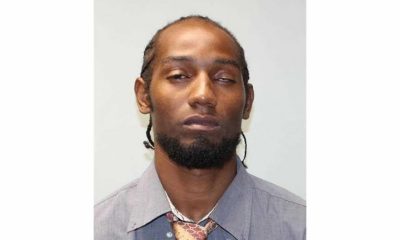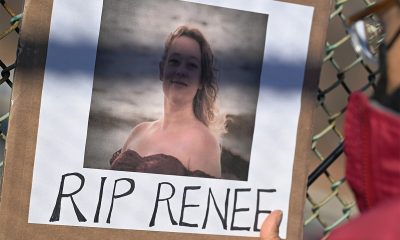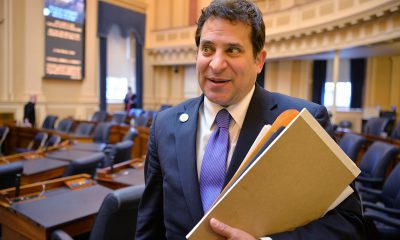Local
Trial begins in Wone murder case
Judge blocks evidence on alleged paralytic drug, S&M restraints

A long-awaited trial opened this week for three gay men implicated in the murder of attorney Robert Wone, who was found stabbed to death inside the men’s Dupont Circle area townhouse in August 2006.
Joseph Price, 39, his domestic partner, Victor Zaborsky, 44, and the couple’s roommate, Dylan Ward, 39, have been charged with obstruction of justice, conspiracy and evidence tampering in connection with Wone’s murder. If convicted on all three charges, the men face a possible maximum sentence of 38 years in prison.
Authorities have yet to charge anyone with the murder itself, a development that has created an air of mystery and intrigue and has captured the interest of the gay community as well as local and national media.
Prosecutors and defense attorneys said they could present 80 or more witnesses and expect the trial to last as long as 10 weeks. Jury selection was scheduled to begin Wednesday at D.C. Superior Court, with opening arguments set for Monday.
Judge Lynn Leibovitz ruled Tuesday against the defense team’s attempt to separate the joint case so that each defendant could be tried individually rather than together in a shared trial.
The defense argued that the men should be tried separately because it would be impossible for prosecutors to avoid violating constitutionally mandated rules of evidence that statements made by one defendant can’t be used against another defendant in a joint trial. But Leibovitz said the defendants’ rights would be protected by strict limits she imposed on the prosecution concerning the introduction of the defendants’ statements about each other.
Defense attorneys were especially concerned about prosecutors’ plans to show jurors videotaped interviews of each of the defendants by homicide detectives conducted shortly after the murder. At Leibovitz’s instruction, prosecutors said they would edit the videos to remove any statements by the defendants that would incriminate a co-defendant.
After months of pre-trial wrangling over the admissibility of evidence, Leibovitz forced prosecutors in the days before the trial began to withdraw several key elements in their case, including allegations that the crime scene was cleaned of blood.
Under pressure that Leibovitz would rule against them and claims by the defense that the government lacked sufficient evidence, prosecutors also agreed not to introduce testimony that Wone may have been immobilized with a paralytic drug or restrained by S&M devices found in the men’s house before being stabbed three times in the chest.
Also excluded was any testimony by police regarding the collection of S&M devices they found in the house, including restraining harnesses, face masks, books about sadomasochism, and a device used to administer an electric shock to a person during sexual activity.
Assistant U.S. Attorney Glenn Kirschner, the lead prosecutor in the case, has said introduction of the S&M devices as evidence was intended to show that Wone might have been restrained at the time he was stabbed.
Kirschner has said the government nonetheless remains confident it has sufficient evidence to prove that the killer “is someone known to the defendants” and that the three men conspired to obstruct the police investigation into the crime.
Kirschner has said he also remains optimistic that the government will demonstrate to the jury that Wone was not murdered by some “unknown, unseen, phantom intruder,” as the defense has alleged.
In pleading not guilty to the charges, the three gay men have said through their attorneys that an intruder entered their house through a rear door while they were asleep and killed Wone.
Wone, a friend of Price since the two attended Virginia’s College of William & Mary, spent the night at the men’s house on Swann Street, N.W., after working late at his nearby office. Wone’s wife, Kathy Wone, and family members have said Wone was straight.
The defendants have retained an experienced and highly regarded team of nearly one dozen defense attorneys, including former prosecutors such as the openly gay former D.C. Attorney General Robert Spagnoletti.
Since Price, Zaborsky and Ward were indicted in the case in 2008, the attorneys have methodically challenged nearly every piece of evidence and legal theory advanced by the government, accusing prosecutors of “manufacturing” a sensational case that isn’t supported by the facts.
In a final series of pre-trial hearings over the past month, Kirschner, chief of the homicide division at the U.S. Attorney’s office, and his smaller team of prosecutors, have sought to defend a case built largely around the aspects of a stabbing death reportedly committed by an outside intruder that were conspicuously missing in the Wone murder.
Citing the autopsy and crime scene findings, prosecutors note that although Wone was stabbed three times in the chest area, including once in the heart, there was hardly any blood on the guest room bed where he was found or on the floor or walls. This prompted prosecutors to conclude in a lengthy arrest affidavit released in October 2008 that someone in the house had “cleaned” the crime scene.
The affidavit points to an autopsy finding that the three stab wounds on Wone’s chest area were surgical-like and undistorted rather than the jagged cuts usually found on a stabbing victim, who would be expected to recoil in pain and move around in an effort to defend himself — even if he were sleeping in a bed, as the defendants say was the case with Wone.
Additionally, there were no defensive wounds on Wone’s hands or arms that are normally found on victims stabbed more than once, who traditionally position their arms to deflect the path of a knife-wielding attacker, prosecutors have said.
The arrest affidavit citing these findings pointed to a theory by the medical examiner that Wone appeared to have been immobilized by a paralytic drug, which likely prevented him from moving during a violent stabbing attack. The autopsy also found several needle marks on Wone’s body that were inflicted before he died, further pointing to the possible injection of a powerful drug before the stabbing.
Yet another autopsy finding of semen in and around Wone’s genital area and rectum prompted prosecutors to initially assert that Wone had been sexually assaulted at the time of the murder.
All of this, prosecutors said, made it clear that Wone could not have been murdered by a burglar or home intruder who entered the house, stabbed Wone and quickly fled.
The defense, however, has argued in pre-trial hearings that the paralytic drug theory should not be introduced as evidence because no such drug could be detected in Wone’s body from chemical tests. The defense also argued that semen is normally found to be secreted when men die and that the government failed to present any evidence that Wone had been sexually assaulted or restrained at the time of the murder.
Instead, defense attorneys announced they plan to call a controversial cardiologist as a witness who will testify that a stab wound to the heart can instantly stop the heart and immobilize the person stabbed. This development, defense attorneys have said, would explain why Wone didn’t move or recoil when stabbed two more times.
The defense said it would also present expert witnesses who will claim the bleeding in Wone’s case was mostly internal, explaining why the crime scene lacked large quantities of blood.
Agreeing with the defense that the government failed to produce sufficient evidence that a paralytic drug was administered, and that Wone was sexually assaulted or restrained by S&M sex devices, Leibovitz either ruled against admission of these theories or persuaded prosecutors not to bring them up at trial.
Kirschner has said the government’s case nevertheless remains strong.
With no evidence of a forced entry, no evidence that anything was taken from the house and no signs that anything was disturbed or disrupted, he has said prosecutors will call on the jury to conclude that an intruder or burglar could not have killed Wone and that the defendants had to know who was responsible for the murder — even if the government doesn’t have sufficient evidence to charge anyone with Wone’s death.
But in a comment at one of the recent pre-trial hearings, lead defense attorney David Schertler called the reasoning “ridiculous,” saying people are killed in the city “all the time” by home invaders and during botched burglaries.
“All you have to do is read the newspapers,” he said.
Maryland
Layoffs and confusion at Pride Center of Maryland after federal grants cut, reinstated
Trump administration move panicked addiction and mental health programs
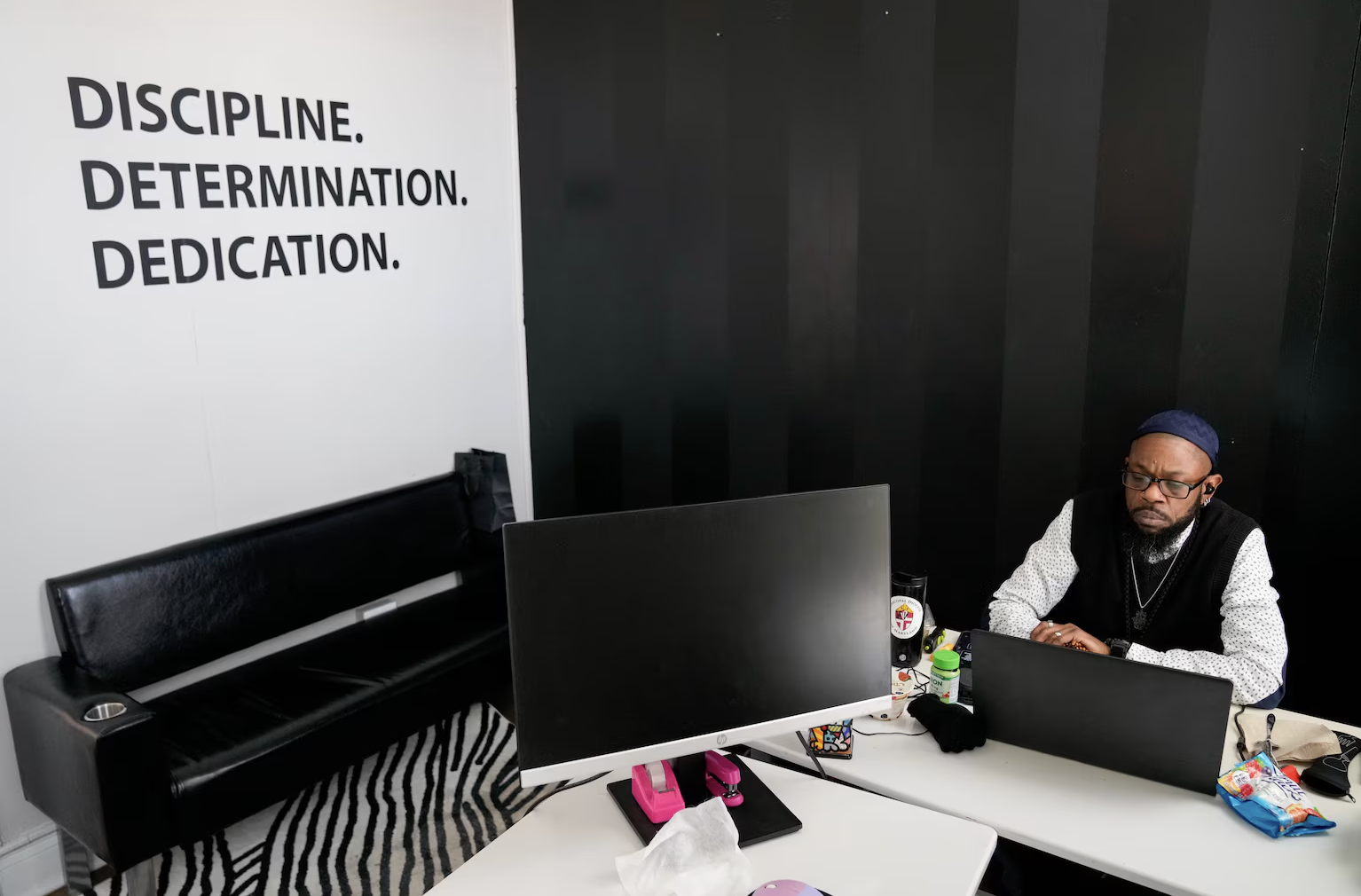
By ALISSA ZHU | After learning it had abruptly lost $2 million in federal funding, the Pride Center of Maryland moved to lay off a dozen employees, or about a third of its workforce, the Baltimore nonprofit’s leader said Thursday.
The group is one of thousands nationwide that reportedly received letters late Tuesday from the Trump administration. Their mental health and addiction grants had been terminated, effective immediately, the letters said.
By Wednesday night, federal officials moved to reverse the funding cuts by the Substance Abuse and Mental Health Services Administration, estimated to total $2 billion, according to national media reports. But the Pride Center of Maryland’s CEO Cleo Manago said as of Thursday morning he had not heard anything from the federal government confirming those reports.
The rest of this article can be read on the Baltimore Banner’s website.
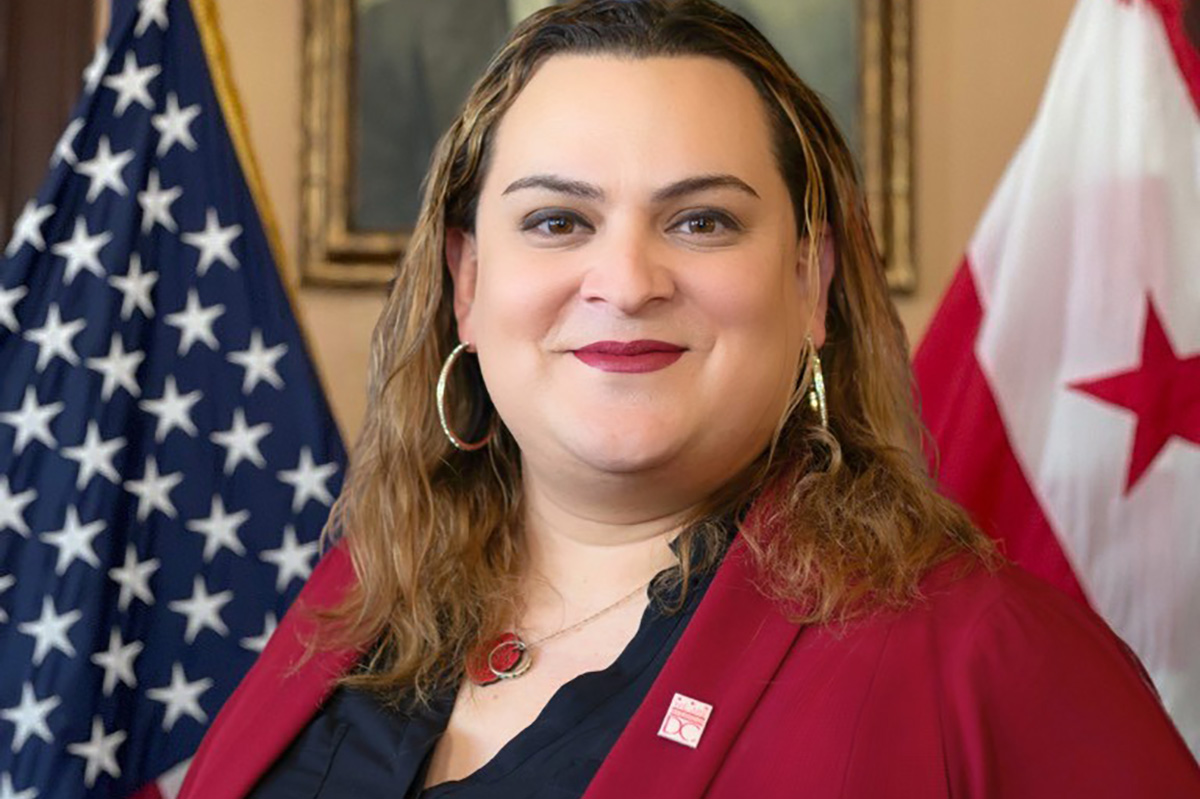
The Comings & Goings column is about sharing the professional successes of our community. We want to recognize those landing new jobs, new clients for their business, joining boards of organizations and other achievements. Please share your successes with us at [email protected].
Congratulations to Vida Rangel, JD/MPP on her promotion to Deputy Director of the Mayor’s Office of Talent and Appointments. Rangel is now the highest-ranking transgender official in the history of District government. On accepting the position Rangel said, “I am proud to step into this leadership role and to continue serving my communities. Our District is full of passionate and knowledgeable people who are committed to public service, and it is an honor to help them explore opportunities to serve their neighbors.”
Rangel has previously served in this office as Director of Operations. Prior to this as Bargaining Committee Chair, Organizing Committee, NCTE United, Nonprofit Professional Employees Union IFTPE Local 70. As Policy Counsel, National Center for Transgender Equality; and Elizabeth Warren for President, lead organizer, Illinois 4th Congressional District. She has worked with, and served on boards of, The Black & Pink National, Federal City Performing Arts Assoc., and LAGBAC.
Rangel earned her bachelor’s in sociology from Sam Houston State University; master’s of Public Policy from Loyola University, Chicago; and Juris Doctor, Loyola University, Chicago.
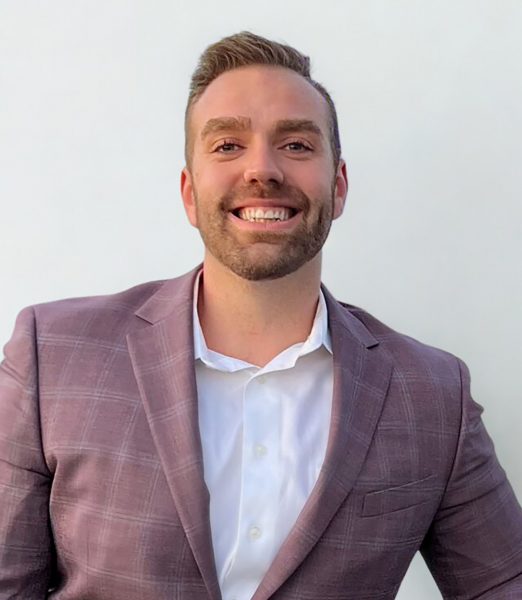
Congratulations also to James Conlon new PFLAG vice president of Development & Philanthropic Partnerships. Upon his appointment Conlon said, “It is an absolute privilege to join PFLAG National and lead their Development & Philanthropic Partner team into a new era. Right now, LGBTQ+ people and their families are terrified of what the future might bring, and PFLAG must continue to be there. My job is to ensure PFLAG strongly endures and thrives, because never has there been a clearer time for our community to unite in fighting for the dignity and well-being of every LGBTQ+ person.”
Brian Bond, CEO, PFLAG National, said, “At a time when PFLAG National programs and participation in them have grown significantly, even as corporate giving has left a $1.3M gap in our funding, James is a critical new addition to the team. With his vast expertise, James will drive our growth and ensure that PFLAG continues meeting the needs of families and communities across the country.”
Conlon is a seasoned fundraiser who has spent extensive time working with advocates, supporters, and leaders, of the LGBTQ+ movement to understand how to effectively support the community. He began his career as an intern in the Massachusetts State House. He has helped raise more than $60 million for critical causes and candidates. Prior to joining PFLAG James oversaw LGBTQ+ investments and fundraising, with the Democratic National Committee (DNC). Prior to that he served in the same role for Harris-Walz 2024, and additionally served in senior fundraising positions for the Senate Majority PAC, as well as for Representatives Josh Gottheimer, and Conor Lamb.
Conlon earned his bachelor’s degree in political science and government from the University of Massachusetts, Amherst.
District of Columbia
D.C.’s annual MLK Peace Walk and Parade set for Jan. 19
LGBTQ participants expected to join mayor’s contingent
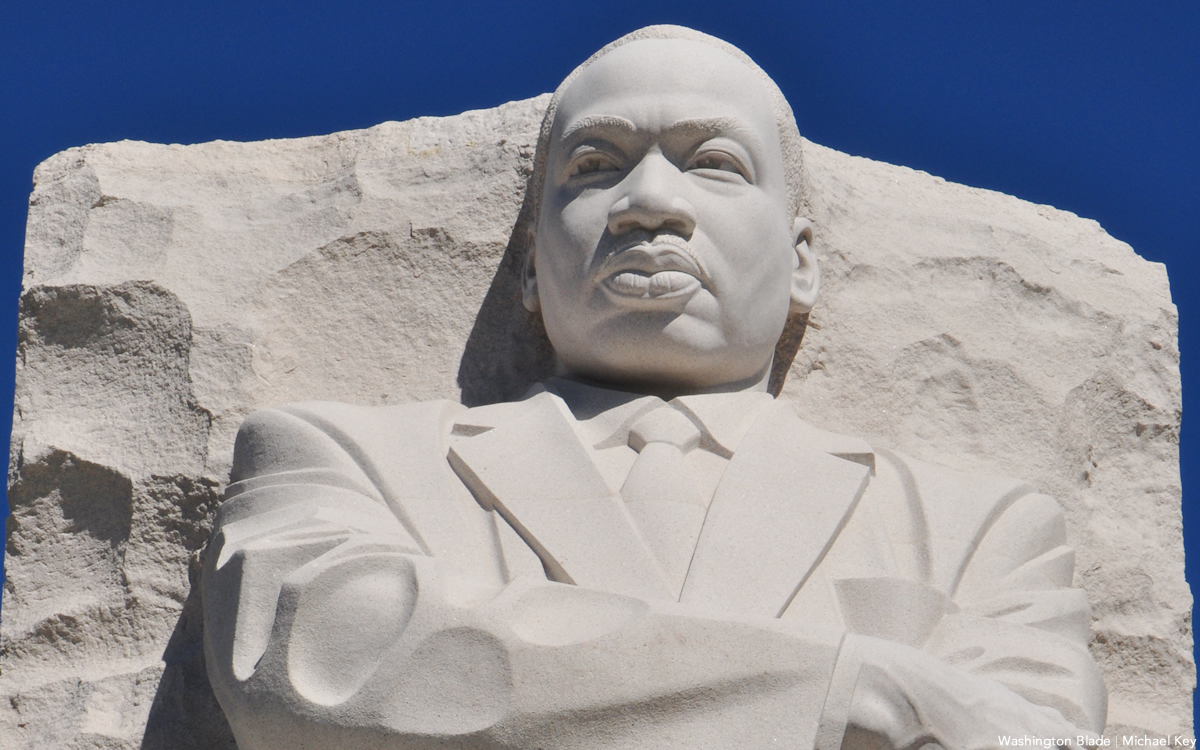
Similar to past years, members of the LGBTQ community were expected to participate in D.C.’s 21st annual Martin Luther King Jr. Day Peace Walk and Parade scheduled to take place Monday, Jan. 19.
Organizers announced this year’s Peace Walk, which takes place ahead of the parade, was scheduled to begin at 10:30 a.m. at the site of a Peace Rally set to begin at 9:30 a.m. at the intersection of Firth Sterling Avenue and Sumner Road, S.E., a short distance from Martin Luther King Jr. Avenue.
The Peace Walk and the parade, which is scheduled to begin at 11 a.m. at the same location, will each travel along Martin Luther King Jr. Avenue a little over a half mile to Marion Barry Avenue near the 11th Street Bridge where they will end.
Japer Bowles, director of D.C. Mayor Muriel Bowser’s Office of LGBTQ Affairs, said he and members of his staff would be marching in the parade as part of the mayor’s parade contingent. In past years, LGBTQ community members have also joined the mayor’s parade contingent.
Stuart Anderson, one of the MLK Day parade organizers, said he was not aware of any specific LGBTQ organizations that had signed up as a parade contingent for this year’s parade. LGBTQ group contingents have joined the parade in past years.
Denise Rolark Barnes, one of the lead D.C. MLK Day event organizers, said LGBTQ participants often join parade contingents associated with other organizations.
Barnes said a Health and Wellness Fair was scheduled to take place on the day of the parade along the parade route in a PNC Bank parking lot at 2031 Martin Luther King Jr. Ave., S.E.
A statement on the D.C. MLK Day website describes the parade’s history and impact on the community.
“Established to honor the life and legacy of Rev. Dr. Martin Luther King, Jr., the parade united residents of Ward 8, the District, and the entire region in the national movement to make Dr. King’s birthday a federal holiday,” the statement says. “Today, the parade not only celebrates its historic roots but also promotes peace and non-violence, spotlights organizations that serve the community, and showcases the talent and pride of school-aged children performing for family, friends, and community members.”
-

 U.S. Supreme Court3 days ago
U.S. Supreme Court3 days agoSupreme Court hears arguments in two critical cases on trans sports bans
-

 Photos5 days ago
Photos5 days agoPHOTOS: ‘ICE Out For Good’ Sunday protests
-

 Virginia5 days ago
Virginia5 days agoMark Levine running in ‘firehouse’ Democratic primary to succeed Adam Ebbin
-

 Arts & Entertainment4 days ago
Arts & Entertainment4 days agoTeyana Taylor, Erin Doherty have big night at Golden Globes



